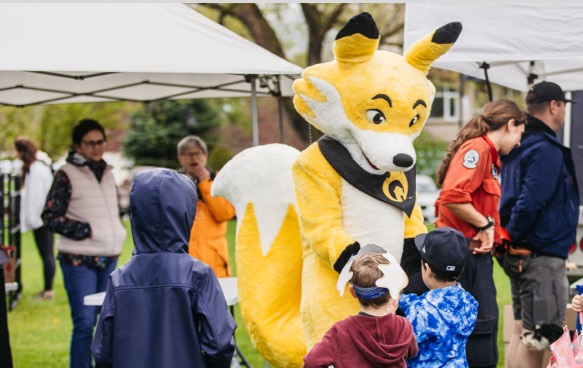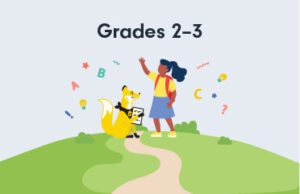Cultural and Prescribed Fire Youth Education
The new FireSmart BC Education Program is a free, all-in-one teaching resource to introduce students in grades K-12 to FireSmart concepts, including how to make homes and communities more resilient to wildfire.

The program at a glance
- Aligned with the BC curriculum
- Teacher and student-friendly
- Interactive and inclusive

Lesson plans

What does respecting fire look like?
Theme: Safety
Students will consider what respectful actions look like. They will identify respectful actions people can take to help us prevent and be safe from wildfires. Students will demonstrate their learning by describing how disrespectful actions with fire can be made respectful.

What is the main idea from the story?
Theme: Safety
Students will practice making inferences before reading, using details from the cover of a book; during reading, using keywords from a story to predict the main idea; after reading, revisiting an initial decision and deciding if it is still the best statement to represent the main idea from the book.

What important lessons can we learn about fire from First Peoples?
Theme: Safety
Students will identify three important ideas about fire by exploring how First Peoples used fire to care for the land.

What are the most important lessons about using fire to care for the land that we can learn from First Peoples?
Theme: Fire Science
Students will explore aspects of First Peoples’ relationships with fire to identify important lessons that can be learned about using fire to care for the land. Students collect or create relevant images and use them to show and describe important lessons to be learned from First Peoples’ relationships with fire.

How related are climate change and wildfires?
Theme: Fire Science
Students will explore the possible connections and relationships between climate change and wildfire.

What are the most important effects of prescribed fire on ecosystem health?
Theme: Ecosystem Stewardship
Students will identify and rate the important effects that prescribed fire can have on ecosystem health. To demonstrate their learning, students develop a public service announcement to communicate important messages about the roles that prescribed fire can play in supporting ecosystem health.

What important lessons about wildfire prevention and safety could be learned from Indigenous Peoples?
Theme: Ecosystem Stewardship
Students identify important lessons from Indigenous Peoples’ traditional knowledge and practices that could help prevent wildfires and protect communities from them.

What are the relationships between colonialism and wildfires?
Theme: Ecosystem Stewardship
Students will explore attitudes, laws, and actions related to colonialism and their relationship with wildfires. Students will demonstrate their learning by creating social media posts that describe the relationships between colonialism and wildfires.

What are the most significant impacts of climate change on wildfires?
Theme: Ecosystem Stewardship
Students identify the factors that affect wildfire frequency and intensity and then use criteria to decide how much climate change may impact each of these factors.

What could individuals do to personally mitigate the causes and impacts of wildfires
Theme: Mitigation and Prevention
Students create and use criteria for a powerful action to identify personally powerful actions that can help mitigate the causes and impacts of climate change and wildfires.
Want to learn more?
To learn more about the FireSmart Education Program and access the lesson plans, visit the FireSmart BC Website.